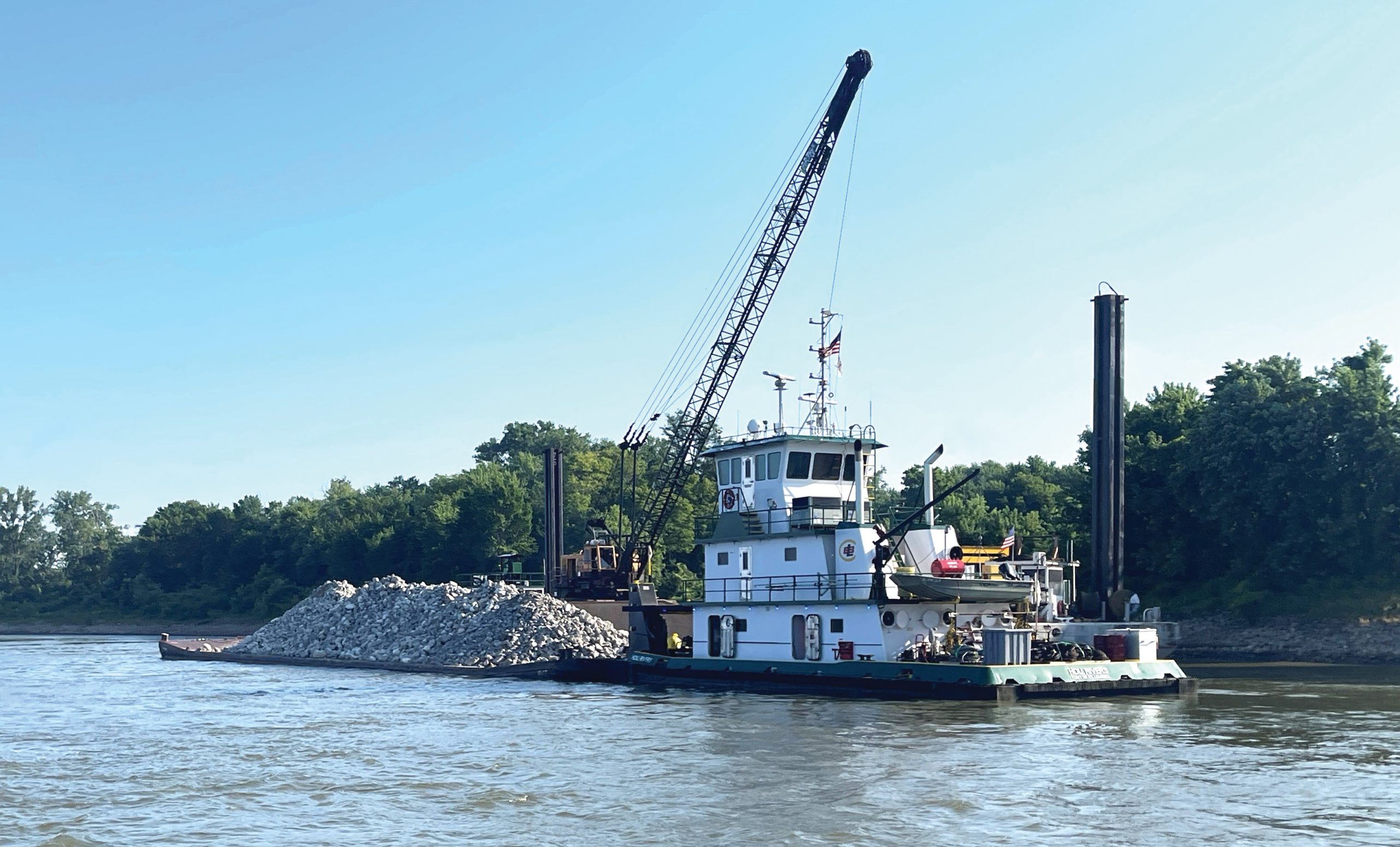A contractor has finished placing 32,400 tons of rock to complete two stone revetments for the Memphis Engineer District.
Midwest Construction Company of Nebraska was the contractor, and Luhr Crosby LLC of Columbia, Ill., was the subcontractor for the $1.5 million project, which was completed July 12. It involved rehabilitating existing stone revetments at Lower Mississippi Mile 952, near Wickliffe, Ky., and Mile 679.5, just above Helena, Ark., at Walnut Bend. Articulated concrete mattress is scheduled for placement at the Walnut Bend location this fall.
Zach Cook, project manager for the Memphis District, said the stone revetments are a key part of maintaining the 300-foot-wide, 9-foot-deep channel, as required by the Congressionally authorized Mississippi River and Tributaries Project. Funding for the project was appropriated through the fiscal year 2025 president’s budget for maintenance of existing infrastructure.
Just as passing cars can contribute to road damage over time, water wash created by towboats and their tows are among factors that contribute to normal wear and tear along the riverbank, Cook said. These factors are why regular maintenance is needed to help prevent erosion and keep riverbanks stable, he said. He added that this maintenance is especially important in areas where vessel traffic is particularly busy, such as near the confluence of the Mississippi and Ohio rivers.
Additionally, varying river conditions also have an effect.

“It’s a combination of high water that we’ve had in the past and the ups and downs of the river,” Cook said.
The Memphis District works closely with the Vicksburg Engineer District’s Mat Sinking Unit (MSU), which produces concrete mats measuring 4- by 25-feet that are tied together with pneumatic tools and placed along the base of riverbank slopes to armor them. Above where the concrete stops, the Memphis District worked with the contractor to place riprap stone to form the revetment. The stone reaches all the way to the top of the bank and sometimes slightly behind it to create “a seamless layer of protection,” Cook said. The concrete armor and stone revetment work together to prevent the channel from meandering.
While the stone revetments may be a common sight along the river, building and maintaining them takes work. The stone for these two revetments was delivered by barge from a quarry on the Upper Mississippi just south of St. Louis, Cook said. Barge-mounted equipment then carefully placed each stone. One stone can weigh up to 400 pounds. Most are at least 125 pounds.
The Memphis District is responsible for maintaining a safe and dependable navigation channel for 355 miles of the Mississippi River, from Cairo, Ill., to the mouth of the White River near Rosedale, Miss.
“It’s important that we get this funding each and every year so we can keep up with our maintenance responsibilities,” Cook said.
The placement of the articulated concrete mattress and the stone revetments are part of the largely unseen work that goes into making sure the channel remains safe for passing vessels, barges and their cargoes, as required under the Flood Control Act of 1928. Ninety-seven years in, that mission remains as essential as ever, Cook said.
————
Feature photo caption: A contractor for the Memphis Engineer District places stone for a revetment on the Lower Mississippi River near Wickliffe, Ky. It is one of two revetments completed July 12 to help maintain the channel and the bank stability. (Courtesy of the Memphis Engineer District)




